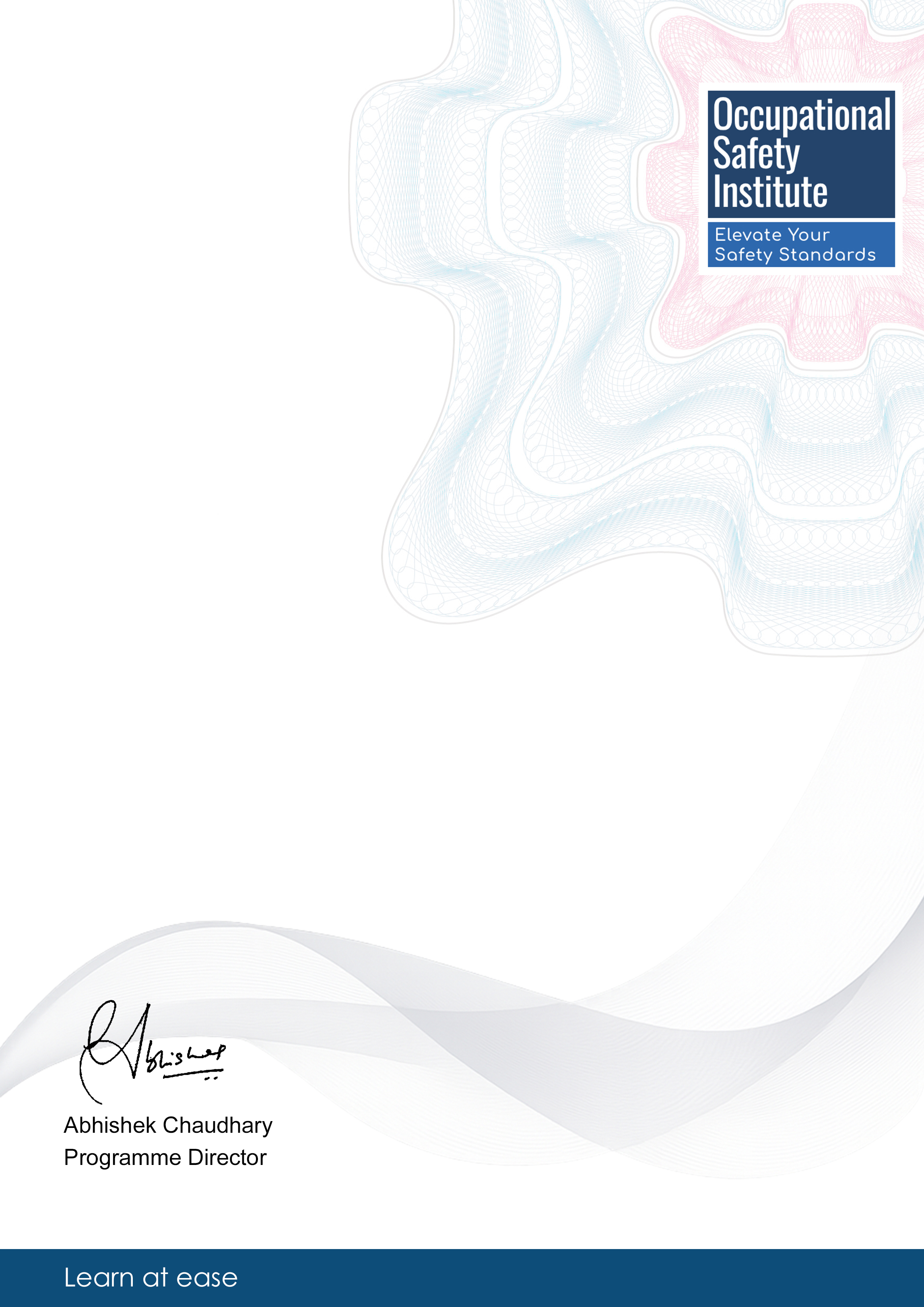Module 1: Introduction to Farm Buffer Zones
This module provides an overview of the importance of buffer zones in farming, key design principles, and their role in environmental protection.
Learn about Farm Buffer Zone Design, its principles, applications, and industry standards. This course is ideal for professionals looking to enhance their skills and career prospects in the field of health and safety.
4.9/5
|362 reviews
|1,248 students enrolled
Comprehensive, industry-recognized certification that enhances your professional credentials
Self-paced online learning with 24/7 access to course materials for maximum flexibility
Practical knowledge and skills that can be immediately applied in your workplace
This module provides an overview of the importance of buffer zones in farming, key design principles, and their role in environmental protection.
Explore the fundamental design principles for effective buffer zones, including vegetation selection, size considerations, and maintenance strategies.
This technical module covers the principles of ergonomic workplace design. You'll learn to analyze workstations, tools, and equipment to optimize them for human use, reducing strain and improving efficiency.
Well-designed workspaces can increase productivity by up to 25% while simultaneously reducing error rates and injury risks.
Learn about relevant environmental regulations, compliance requirements, and how to ensure buffer zones meet legal standards.
Understand how to assess risks associated with buffer zone design and implement mitigation strategies to prevent environmental harm.
This module provides you with practical frameworks and methodologies for conducting thorough risk assessments in various workplace settings. You'll learn evidence-based approaches to identify, evaluate, and prioritize potential hazards.
Effective risk assessment has been shown to reduce workplace injuries by up to 70% when implemented correctly, making this a critical skill for safety professionals.
Explore sustainable approaches to buffer zone design, including biodiversity conservation, water quality protection, and soil health enhancement.
This technical module covers the principles of ergonomic workplace design. You'll learn to analyze workstations, tools, and equipment to optimize them for human use, reducing strain and improving efficiency.
Well-designed workspaces can increase productivity by up to 25% while simultaneously reducing error rates and injury risks.
This programme includes comprehensive study materials designed to support your learning journey and offers maximum flexibility, allowing you to study at your own pace and at a time that suits you best.
You will have access to online podcasts with expert audio commentary.
In addition, you'll benefit from student support via automatic live chat.
Assessments for the programme are conducted online through multiple-choice questions that are carefully designed to evaluate your understanding of the course content.
These assessments are time-bound, encouraging learners to think critically and manage their time effectively while demonstrating their knowledge in a structured and efficient manner.
The demand for professionals skilled in farm buffer zone design is growing, with opportunities in agriculture, environmental consultancy, regulatory compliance, and land management.
Graduates can pursue roles such as Environmental Engineer, Agricultural Planner, Conservation Specialist, and Compliance Officer, with pathways for specialization and leadership roles.
Environmental engineers design and implement environmental protection measures, including farm buffer zones, in industries such as agriculture, construction, and waste management.
Conservation specialists work to protect natural resources, including designing and managing buffer zones for farms, forests, and water bodies.
Professionals in this field can benefit from networking opportunities with industry experts, pursuing advanced certifications in environmental management, and furthering their education in related disciplines for career advancement and industry recognition.
Agricultural Engineer
"I learned how to design farm buffer zones that comply with environmental regulations and optimize land use efficiently."
Environmental Scientist
"This course helped me assess and mitigate risks associated with buffer zone design, ensuring sustainable agricultural practices."
Farm Manager
"Implementing industry best practices learned here improved our buffer zone effectiveness and overall farm safety measures."
Agronomist
"I can now apply relevant regulations to design buffer zones that protect the environment and enhance crop production sustainably."
Upon successful completion of this course, you will receive a certificate similar to the one shown below:

Farm Buffer Zone Design
is awarded to
Student Name
Awarded: January 2026
Blockchain ID: 111111111111-eeeeee-2ddddddd-00000
No specific prior qualifications are required. However, basic literacy and numeracy skills are essential for successful completion of the course.
The course is self-paced and flexible. Most learners complete it within 1 to 2 months by dedicating 4 to 6 hours per week.
This course is not accredited by a recognised awarding body and is not regulated by an official institution. It is designed for personal and professional development and is not intended to replace or serve as an equivalent to a formal degree or diploma.
This fully online programme includes comprehensive study materials and a range of support options to enhance your learning experience: - Online quizzes (multiple choice questions) - Audio podcasts (expert commentary) - Live student support via chat The course offers maximum flexibility, allowing you to study at your own pace, on your own schedule.
Yes, the course is delivered entirely online with 24/7 access to learning materials. You can study at your convenience from any device with an internet connection.
Fashion Design Conflict Resolution Skills
This course delves into conflict resolution skills specific…
Skirt Design and Illustration
This professional course on Skirt Design and Illustration i…
Livestream Fashion Design
This Livestream Fashion Design course offers a unique blend…
Safe Handling of Materials in Fashion Illustration for Perfume Bottle Design
This course focuses on teaching safe handling practices of …
Disclaimer: This certificate is not intended to replace or serve as an equivalent to obtaining a formal degree or diploma. This programme is structured for professional enrichment and is offered independently of any formal accreditation framework.